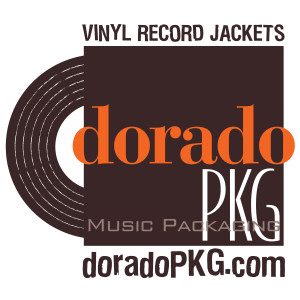In an age where cover art is often confined to a 600-pixel square, Dorado Music Packaging is quite literally coloring outside of the lines. Now in its 20th year of operation, the North Hollywood print and packaging shop manufactures album covers and other entertainment packaging materials that visually represent the hundreds of musicians, record labels and graphic designers who turn to Dorado for their services.
“Cover art is a vehicle that visually reveals specifics about who a band is, what they believe in, what their vision of the world is and what they stand for in a way that complements the music,” says Jennifer Freund, founder and CEO of Dorado Music Packaging. “It gives the fans a deeper understanding of where this band is coming from. Those fans that drive to see a band play, that download all of their music, that are following their careers, it’s important to provide them with a physical form of the artist. An LP is a much greater gift to the band’s music than anything else you could find at a merch table.”
Some of the “physical forms” the music may take at Dorado include standard 7-inch, 10-inch and 12-inch direct-to-board record jackets, gatefold record jackets, inserts, inner sleeves, center labels, CDs, digipaks, countless promotional print items and their most popular offering, the Old Style Tip-On Record Jacket.
Prominent in the 1960s, Dorado’s Old Style Tip-On Record Jackets are comprised of two-sheets of paper wrapped around a heavy chipboard shell. The corners of the front sheet are carefully folded over the chipboard while the second sheet is placed on the back and laminated in place. The result is an album cover that matches the authenticity of historic record jackets. Many audiophiles equate the difference between Old Style Tip-On and standard record jackets to the difference between hard cover and paperback books.
Freund feels that clients choose the Old Style packaging because it both adds to the authenticity of an LP release and enhances the value, from a design standpoint, of the album as a whole.
 “Old Style expands the paper options available and a lot of very interesting techniques can be used,” says Freund. A recent release of note is DJ Day’s Land of 1000 Chances, a limited edition 12-inch Old Style Tip-On Record Jacket from boutique record label Piecelock 70. “Thes [One, owner of Piecelock 70 and one half of seminal hip-hop duo People Under the Stairs] always brings creative ideas to the table for his releases. He wanted to emulate the look and feel of an old leather bound book, so we experimented with various materials until it matched perfectly. The record jacket also includes a removable Polaroid and gold foil stamping.”
“Old Style expands the paper options available and a lot of very interesting techniques can be used,” says Freund. A recent release of note is DJ Day’s Land of 1000 Chances, a limited edition 12-inch Old Style Tip-On Record Jacket from boutique record label Piecelock 70. “Thes [One, owner of Piecelock 70 and one half of seminal hip-hop duo People Under the Stairs] always brings creative ideas to the table for his releases. He wanted to emulate the look and feel of an old leather bound book, so we experimented with various materials until it matched perfectly. The record jacket also includes a removable Polaroid and gold foil stamping.”
Freund continues, “A record jacket isn’t just a package that vinyl comes in. It’s an art form all in itself. You don’t experience the art form with just a download. The printing techniques that a band or label chooses will enhance their release and add to the value, the uniqueness, the creativity… All of those qualities connect to fans on a completely different level.”
While industry veterans may know exactly what to expect when placing a record jacket order, Dorado works with many independent artists on their first vinyl releases. “The format of the music industry itself has changed over the years,” says Freund. “Previously with major labels, a creative team and Creative Director would oversee the development of the band’s visual image and generally serve as our point person.” She continues, “For indie artists, it’s a lot less formal now, which makes it more personal, actually. We’re able to work with an unsigned band who may be placing their very first vinyl order and guide them through the process.”
When asked what a band going the DIY route should look out for when placing their record jacket order, Freund mentions a few points that may seem simple, but are critical for design:
- Stay within the lines. Dorado has templates available on their website for all of their products. The templates should serve as the backbone of an artist’s design.
- Include all of the fonts and images Dorado will need to reproduce your art. Although sending a high-res PDF is encouraged, if an artist is unsure of the correct resolution or file size, it’s best to send the native files with all of the fonts and images collected. Dorado can assist in assembling the PDF from there, without much lag-time in the process.
- Extend your art throughout the bleed area. This is especially important with Old Style Tip-On record jackets since they wrap directly around the shell.
If it still seems too daunting a task, ask for help. Dorado has on-staff production artists available to answer any questions a client may have. Album cover design isn’t a turnkey process. It takes time; it’s art. In a world of instant downloads and 72 dpi graphics, that is, perhaps, the best part about it.
For more information, visit www.doradopkg.com
